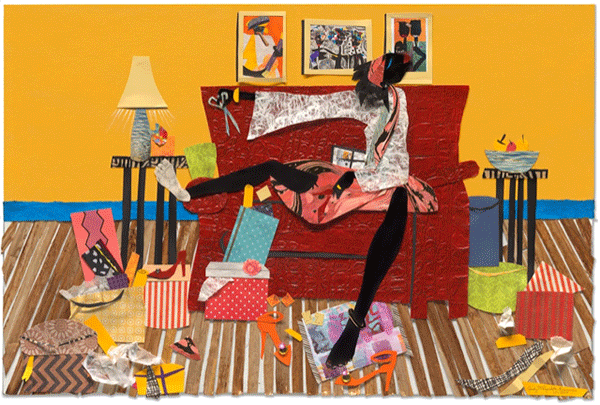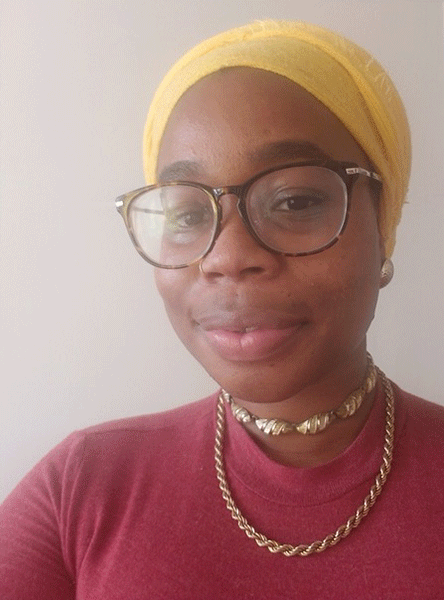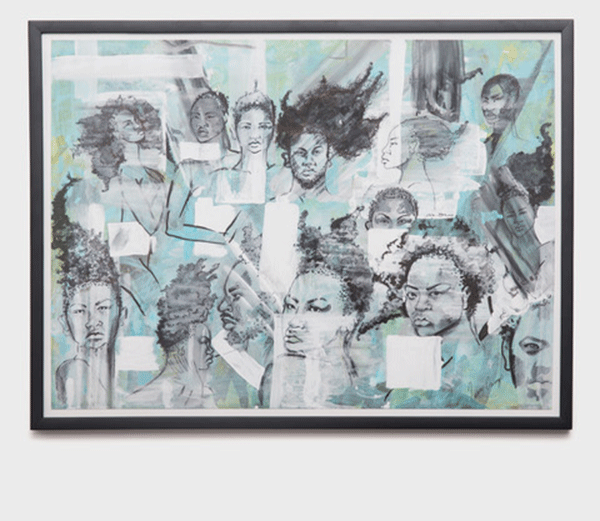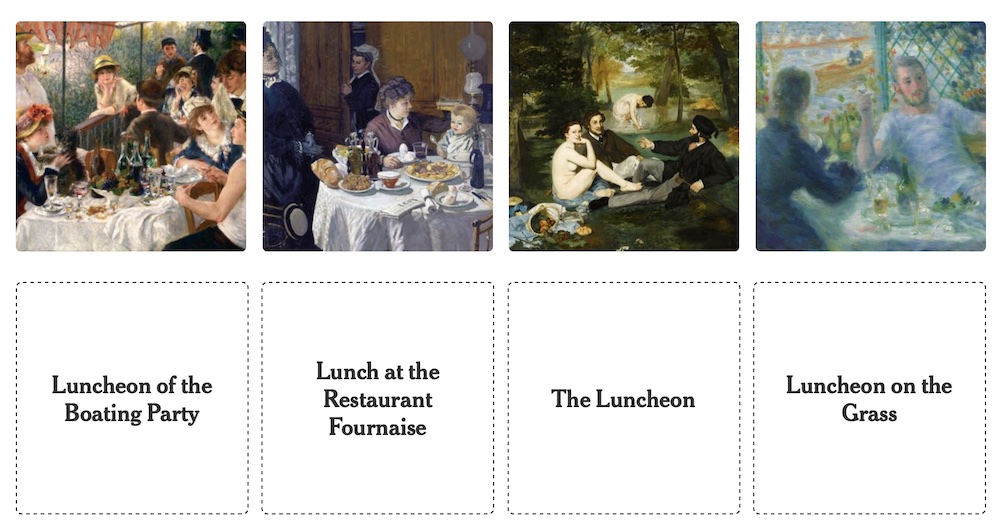ART IS… Jamillah Hinson: Outside the Boundaries of Self-Taught Art


ART Is... is an ongoing series for CGN by former intern Riley Yaxley, who seeks to write about underrepresented perspectives and voices in the arts community. This is the fourth installment in the series.
By RILEY YAXLEY
The sculpture rests on the battered remains of an ornate, wooden chair, mounted atop a white swan with two legs dangling on either side. On each shoulder of the body fashioned out of found objects, ceramic and plaster birds are perched or in mid-flight, suggesting a figure in angelic repose or alluding to an innate freedom within the subject.
Vanessa German’s A Love Poem to Nia Wilson #2 is one of the standout pieces from This Stillness, an exhibition at Intuit: The Center for Intuitive and Outsider Art curated by Jamillah Hinson. I cannot help but find myself transfixed by the meticulous accumulation of materials bound together to form the regal, delicate figure of the sculpture. The work is on loan from the Carl Hammer Gallery, where I would later encounter it again during a private event for Intuit. A Love Poem to Nia Wilson #2 feels at home in both the white cube of Intuit’s galleries and when positioned as a centerpiece in the warm study-like atmosphere of Hammer Gallery.
The title of the sculpture refers to Nia Wilson, a black teenager who was stabbed to death by a white man while waiting on a Bay Area Rapid Transit station platform in Oakland, California in 2018. Nia’s death prompted nearly 1,000 people to hold a vigil for an attack that many in the community considered a hate crime. Vanessa German created a number of these “power figures” to represent the secret lives of black girls in America and to show how they save their power and pain to triumph in hostile environments.

For This Stillness, Jamillah placed the work of Vanessa German in conversation with the work of Detroit-based artist Judy Bowman and painter Tracy Crump, who was represented by famed Chicago gallerist Ann Nathan and now exhibits at Pagoda Red. Jamillah curated This Stillness to explore the complexities of Black girlhood and womanhood and the quiet reflections of self that arise from these circumstances.
I first met Jamillah while I was interning at Intuit in 2018. She was the Financial Manager and Assistant to the Executive Director at Intuit but would later leave to work as an office assistant in the Textiles Department at the Art Institute of Chicago. Deb Kerr, the Executive Director at Intuit, remarked to me after Jamillah’s departure that she wished Jamillah would pursue curating rather than working in another administrative position. Deb’s words were not an empty aside. Alison Amick, the Chief Curator at Intuit, approached Jamillah this year to write a proposal for the exhibition
Jamillah and I now serve together on Intuit’s Young Professionals Board, an auxiliary leadership group at the museum designed to support Intuit’s mission to celebrate the power of and explore Outsider art as well as spread awareness about the genre. We reconnected at the Young Professionals’ inaugural meeting.
*

I climbed the steep, carpeted stairs to the second floor of Intuit’s unique space. Long folding tables had been set up with neatly laid out materials and bowls of M&M’s. I immediately see Jamillah. She has one of the kindest faces I know, with a broad smile, and dainty glasses that give her an air of quiet, focused intellectualism. During the meeting, she leans forward when she has something to contribute to the discussion and she often laughs after making a precise observation about why something would or wouldn’t work well for the event. A week after the meeting, I sent an email asking Jamillah to interview for CGN, knowing that This Stillness would be opening in a few weeks. She enthusiastically agreed, signing her email with “Bright moments, Jamillah.”
We meet at the Goddess and The Baker during my lunch break. I ask Jamillah to give me a brief elevator pitch of This Stillness to begin, and as she describes the aim of the exhibition to survey Black womanhood, girlhood, and adolescence, as well as contemporary assemblage and collage. Both assemblage and collage have a rich history in both Folk art and Black art tradition. She stops herself briefly, self-consciously confessing how “arty” (read: pretentious) she is being.
“Oh please, I am constantly at risk of being pretentious.” I say to her.
Jamillah’s simultaneous ability to code switch between the vernacular of art theory and everyday conversation is one of the many reasons I admire her work. This skill allows her to curate with an inclusive eye, focusing on collaboration with artists and curators to best present the work so that it is accessible to its audience.
Jamillah started curating in Omaha, after graduating from Creighton University with her Bachelors in Art History, Criticism and Conservation, because she recalls she had friends who were making incredible work and she offered, she says, to try and put something together for them, which explains why she describes her curatorial method as very grassroots and cautions herself against becoming too 'professionalized.'
Describing her maximalist approach to filling the gallery space, Jamillah explains, “I wanted people to come into the space and feel softly suffocated. I love a salon wall.” This Stillness deviates from Intuit’s usual minimalist curatorial approach, allowing Jamillah to create an overwhelming sensation for visitors as they encounter the abundance of Judy Bowman’s, Tracy Crump’s, and Vanessa German’s work.
Jamillah hoped that this experience would elicit a feeling similar to that of growing up Black in America. The array of media—including sculpture, assemblage, and hand drawing—gives visitors the opportunity to admire the works, the broader statements, and themes upon which the pieces are built, or immerse themselves in the nuances and identities that are drawn out and put on display.
My interest is immediately piqued when Jamillah points out, “With Judy Bowman I was pushing to see what Intuit considers self-taught art.”
I was first introduced to self-taught and intuitive art when I interned for Intuit in 2018, so I am admittedly not an expert on the genre. However, I have always been intrigued with self-taught and intuitive art, especially as technology rapidly alters our social landscapes. Communities and individuals that previously would have been considered “outsiders” can now be connected through digital networks.
“I want to be as transparent as possible because that’s how I am,” Jamillah warns me, and I nod affirmatively. As I ask about the process of curating This Stillness, Jamillah alludes to envelope-pushing conversations with Intuit’s board that drew out, but ultimately deepened, the process of bringing the exhibition from proposal to execution.

Like most museums, Intuit’s board has an Exhibitions Committee that governs the museum’s exhibitions. Board member perspectives on the genre may be informed by their personal collections and knowledge of art history, which supplements, but not does not replace, the professional expertise of curatorial staff. Feedback from board members to Jamillah’s initial proposal, which included the work of Chicago-based Brittney Leeanne Williams, indicated they were concerned that the aesthetic of Williams’s work was not “Outsider” enough, despite being primarily self-taught after dropping out of the School of the Art Institute a year into her studies. Williams was recently included in Show Me Yours, an exhibition featuring the work of emerging artists at Chicago’s renowned Monique Meloche Gallery.
A previous exhibition at Intuit featured the work of Stephen Warde Anderson, who attended the University of Chicago for a year before dropping out to serve in the United States Navy for four years.
Intuit, as a leader in the genres of Outsider, Intuitive, and self-taught art, is faced with the challenge of remaining flexible even as these genres shift and are redefined.
Jamillah states, “A lot of the planning for this show was trying to help the board understand what they wanted from [my] show. I decided to give them what I think they need.”
Despite these ambitious aims in challenging the institution, Jamillah’s biggest concern when planning an exhibition was the artist’s experience. She wanted, she says, for them to be happy at the end of the day, even if they never came to see the show. Judy Bowman did visit from her hometown of Detroit and loved the exhibition, demonstrating Jamillah’s careful attention and stewardship of the artists.
Intuit’s Exhibitions Committee initially argued that Bowman’s inclusion in the exhibition may not be a fit with Intuit's program, since she had some formal training, earning a degree in education from Atlanta’s Spelman College and took a few art classes at the time. However, she would not create work for another 35 years following her time in school, when she retired and began crafting multimedia portraits and scenes depicting Black American life in Detroit’s Black Bottom and the South. The Black Bottom neighborhood was demolished in the early 1960’s during the City’s Urban Renewal program to combat “Urban Blight," and the predominantly black neighborhood, as well as Paradise Valley, was replaced by the Chrysler Freeway and Lafayette Park, a mixed-income development designed by Mies van der Rohe as a model neighborhood combining residential townhouses, apartments and high-rises with commercial areas. Many of the residents of these neighborhoods were displaced and moved into public housing.
Bowman’s work reimagines an earlier generation heavily inspired by the tradition of collage, assemblage and material work in Black American history. These works offer a “non-traditional” documentation of Black life placed in conversation with the works of Vanessa German and Tracy Crump. Their works are, as Jamillah says, a response to the now, something she thinks should be included more often in Intuit’s programming.
As the criteria for Outsider, Intuitive, and self-taught art inevitably shift, museums that exhibit the work of self-taught or intuitive artists will have to remain nimble and capable of change as well. This Stillness represented a new endeavor for Intuit or, as Jamillah suggests, “It may not look like what Intuit has done in the past, but to me it looks like what Intuit can be doing in the future."





